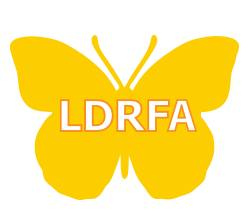What is ADHD?
Attention-deficit/hyperactivity disorder-ADHD is most often linked to hyperactivity. It is a real pathology, a neurodevelopmental disorder too often branded as maladjustment due to lack of care on the part of the parents. It is not due to family or social reasons and, unfortunately, it does not disappear with age. No particularly effective therapies have been found, although today guanfacine, a new drug, seems to have interesting developments.
Table of Contents
ToggleFor children who are affected by ADHD, it is a seriously debilitating pathology because it is a source of exclusion from social relationships, often even with family. In America a group of pediatric psychiatrists claim in a limited research study that the best therapy for these children is to participate in sports. Sports play a very positive role in the lives of many children. There’s no reason it shouldn’t for children with ADHD as well, the researchers argue.
Playing sports increases self-esteem
The isolation these children experience and their very behaviors, of which they are aware, lead to a concrete deficit of self-esteem. Playing a sport is a great way to boost your self-esteem. A sport allows you to get involved which is the thing these children need most.
This is what Dr. Jay Salpekar, an ADHD child psychiatrist at the Pediatric Medical Center in Washington, DC. stated: Furthermore, “sport offers many possibilities for social inclusion, as well as giving a good physical shape”, says Dr. Salpekar. Experiencing a bond with peers and getting out of the “shell” of isolation is the most successful therapy in these cases.
Other experts, such as Dr. James McGough, agree. “A common problem with ADHD children is finding something to help them gain confidence and self-esteem,” says Dr. McGough, a child psychiatrist at the UCLA ADHD Clinic in Los Angeles. “They can use sport as a vehicle for making and having friends. And healthy activities like sport are much more useful than spending hours and hours alone in front of the television”.
Choosing the right sport
Of course, many of an individual’s chances of success are linked to the type of sport chosen. For this it is necessary to offer them a wide choice, to let them try all the possibilities offered by the school or youth centers and, in the end, to leave them the choice to practice what attracts them most.
“Identify and support your child’s interests,” says Dr. McGough. ” This is the starting point.”
Generally speaking, it is better to favor sports that keep you moving, such as football, and avoid sports that, on the contrary, involve long periods of inactivity but with high levels of concentration, such as baseball or esports streaming.
Some argue that individual sports, such as tennis and swimming, are to be preferred because there is no need to keep paying attention towards your teammates and you do not need to remember and learn game strategies, sometimes complex.
There is no confirmation of this even if a rather concrete example often cited is Michael Phelps, 18 Olympic medallists in swimming, who has ADHD. Nevertheless, Dr. Mc Gough argues that if one’s preference was directed towards a team sport it is better to support it and encourage the child in that direction.
From an operational standpoint, one statistic concluded that martial arts are at the top of ADHD children’s preferences.
Psychiatrists strongly support this choice because, in childhood martial arts, they are completely free of violent or dangerous moves by keeping the children in groups and accustoming them to making certain physical movements with common timings, which is particularly useful for ADHD children.
Salpekar, who has coached many children in football for years, also recommends that parents pay close attention to their children’s personality when choosing a sport.
Simone Biles’ “road to success”
Simone Biles’ career is something to behold. As Jemele Hill wrote in The Atlantic, the gymnast appears to be “the greatest athlete in the world today” and this is “a statement of fact”. Prior to the 2020/2021 Olympics, Biles was widely regarded as the best gymnast of all time with a total of 30 Olympic and world medals, as noted in The Athletic.
But even with all the attention that comes with all the accolades and achievements, there is still a lot to learn about the phenomenon. While her agility, skill level, and complex routines have taken the world by storm, Biles isn’t just gymnastics.
From her childhood and family to her mental health problems, to her relationship with Jonathan Owens, Biles shares much of her life with her millions of fans. But even the biggest fans may not know everything about the elite gymnast. So, let’s get into what you never knew about Simone Biles.
Not long after winning big at the 2016 Rio Olympics, Simone Biles shared that she has ADHD and is taking medication for it. This emerged when, as reported by ESPN, “hackers circulated confidential medical records from the World Anti-Doping Agency database and tried to use Biles’ use of prescription drugs to question her credentials.”
“Having ADHD and taking medication for it is nothing to be ashamed of, nothing I’m afraid to let people know about,” she tweeted. In a follow-up tweet, she wrote that she believes in clean sport and has always followed the rules when it comes to medicine. And USA Gymnastics has confirmed that she has not broken any Olympic rules by taking ADHD medications.
“ADHD A Superpower”
Biles continued to be part of an Understood campaign to raise awareness of learning and attention challenges. While chatting with two children who have ADHD and dyslexia, she called ADHD “a superpower” and said, “It never held me back, and I never let it hold me.”
Do you suspect that you or a loved one has a learning disability? If so, LD Resources Foundation is here to help. Check out our resources and Dyslexia AT Tools on how to thrive with a LD Testing & Assessment.


